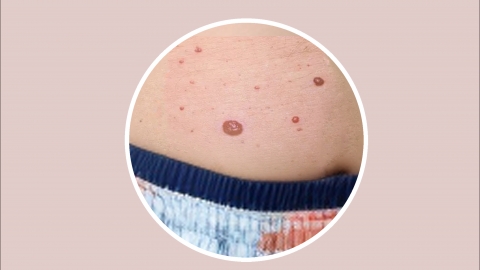What is a benign hemangioma?
Under normal circumstances, benign hemangiomas may result from abnormal blood vessel development during the embryonic period, hormonal changes, mild proliferation of vascular endothelial cells, chronic local tissue irritation, or vascular malformations. It is recommended to seek medical attention promptly, identify the underlying cause, and receive appropriate treatment under a doctor's guidance. Specific causes are analyzed as follows:

1. Abnormal vascular development during the embryonic period: During embryonic development, abnormal differentiation of vascular tissues can lead to localized clusters of abnormal blood vessels, which gradually become apparent as benign hemangiomas after birth. If the hemangioma is small and asymptomatic, regular observation is sufficient. Avoid friction or trauma to the area to reduce the risk of vascular injury.
2. Hormonal changes: Elevated levels of estrogen and progesterone during puberty or pregnancy may stimulate blood vessel dilation and proliferation, triggering or worsening benign hemangiomas. Maintain a regular sleep schedule, avoid staying up late, minimize hormonal fluctuations, and monitor any changes in the hemangioma without excessive intervention.
3. Mild proliferation of vascular endothelial cells: Slight abnormal proliferation of vascular endothelial cells can cause localized vascular bulging, forming a benign hemangioma, usually without significant symptoms. If the hemangioma affects appearance, medications such as propranolol tablets, timolol eye drops, or prednisolone tablets may be used under medical supervision to suppress proliferation and promote regression.
4. Chronic local tissue irritation: Prolonged friction, inflammation, or other chronic irritation to the skin or mucous membranes can induce local blood vessel proliferation, leading to benign hemangiomas. Treat any underlying inflammation promptly; topical medications such as mupirocin ointment, fusidic acid cream, or compound polymyxin B ointment may be used as directed by a physician to control inflammation.
5. Vascular malformation: Abnormal shape or structure of local blood vessels can cause blood stasis and form benign hemangiomas, which may slowly enlarge with age. If the hemangioma grows and impairs function, surgical interventions such as laser therapy, cryotherapy, or hemangioma excision can be performed to remove the lesion and restore normal local structure and function.
In daily life, keep the hemangioma area clean and dry, and avoid scratching or squeezing it. Regularly monitor changes in the size and color of the hemangioma. Proper care and management can help minimize adverse effects and maintain the health of the surrounding tissue.






